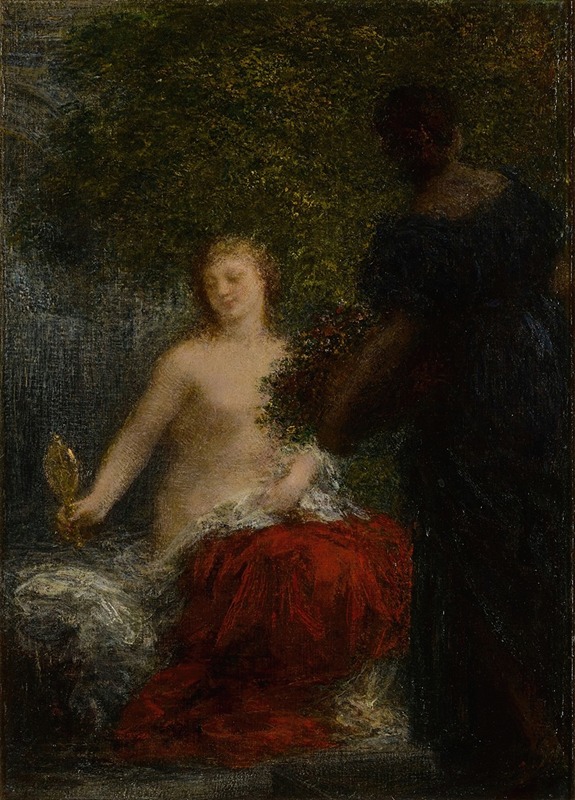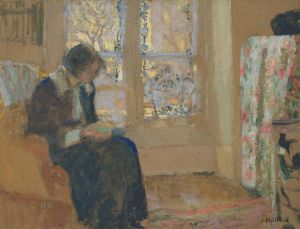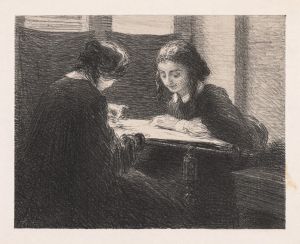
Femme à sa toilette
A hand-painted replica of Henri Fantin-Latour’s masterpiece Femme à sa toilette, meticulously crafted by professional artists to capture the true essence of the original. Each piece is created with museum-quality canvas and rare mineral pigments, carefully painted by experienced artists with delicate brushstrokes and rich, layered colors to perfectly recreate the texture of the original artwork. Unlike machine-printed reproductions, this hand-painted version brings the painting to life, infused with the artist’s emotions and skill in every stroke. Whether for personal collection or home decoration, it instantly elevates the artistic atmosphere of any space.
Henri Fantin-Latour was a French painter renowned for his exquisite still lifes and portraits. One of his notable works is "Femme à sa toilette," which translates to "Woman at Her Toilette." This painting exemplifies Fantin-Latour's skill in capturing intimate and serene moments, a characteristic feature of his oeuvre.
Henri Fantin-Latour was born on January 14, 1836, in Grenoble, France. He moved to Paris in 1850, where he studied at the École des Beaux-Arts and worked in the studio of Gustave Courbet. Although he was associated with the Impressionists and exhibited with them, Fantin-Latour's style remained more aligned with Realism and Symbolism. He was particularly known for his flower paintings and group portraits of Parisian artists and writers.
"Femme à sa toilette" is a fine example of Fantin-Latour's ability to depict the quiet elegance of everyday life. The painting portrays a woman engaged in her toilette, a term that refers to the process of grooming and dressing. This subject was a popular theme in 19th-century art, reflecting the period's interest in private, domestic scenes. The painting captures a moment of introspection and tranquility, with the woman absorbed in her routine, seemingly unaware of the viewer's gaze.
Fantin-Latour's technique in "Femme à sa toilette" is characterized by a soft, delicate approach to color and form. His use of light and shadow creates a gentle atmosphere, enhancing the intimate nature of the scene. The composition is carefully balanced, with attention to detail that draws the viewer into the woman's private world. The subtlety of the brushwork and the harmonious palette are hallmarks of Fantin-Latour's style, demonstrating his mastery of the medium.
Throughout his career, Fantin-Latour maintained a focus on traditional subjects, often eschewing the more radical approaches of his contemporaries. His work was well-received in both France and England, where he exhibited regularly. Despite his association with the avant-garde, Fantin-Latour's paintings were appreciated for their technical precision and emotional depth.
"Femme à sa toilette" reflects Fantin-Latour's interest in capturing the essence of his subjects with sensitivity and grace. The painting is a testament to his ability to convey the beauty of ordinary moments, elevating them to the level of fine art. It is a work that continues to be admired for its quiet elegance and the insight it offers into the private lives of its subjects.
Fantin-Latour's legacy is marked by his contribution to the development of modern art, bridging the gap between traditional realism and the emerging movements of his time. His paintings remain celebrated for their beauty and craftsmanship, and "Femme à sa toilette" is a prime example of his enduring appeal. The work is housed in various collections, where it continues to captivate audiences with its timeless charm and artistic excellence.


















